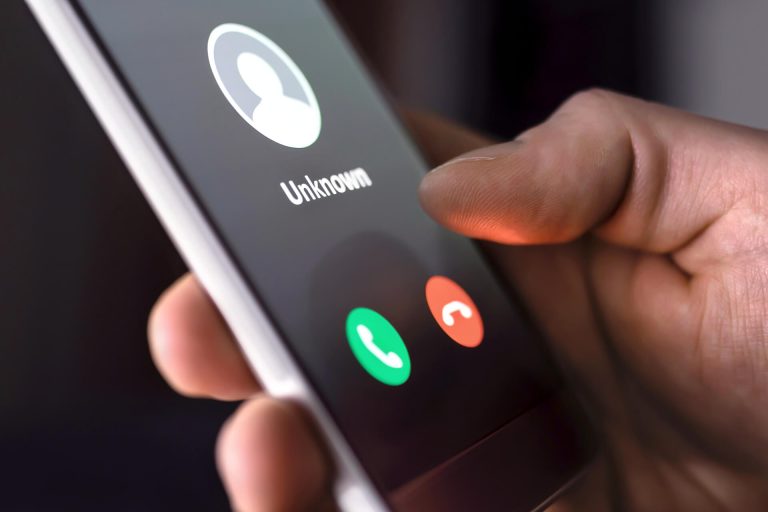As phone systems evolve, VoIP systems become more commonplace in home and office settings. However, not everyone is familiar with this new and improved system. You may ask, “What is a VoIP caller?”
This guide will answer what you need to know—from how to identify a VoIP caller, what differentiates them from regular callers, and how to stop VoIP calls.
What is a VoIP Caller?
A VoIP caller refers to a person or entity that makes phone calls using Voice over Internet Protocol (VoIP) technology. VoIP callers can make calls from various devices, including computers, smartphones, tablets, and specialized VoIP phones. They can communicate with others using VoIP technology or traditional landline and mobile phone users, depending on the VoIP service and its interoperability with conventional telephone networks.
How is a VoIP Caller Different from a Regular Caller?
A VoIP caller differs from a regular caller in that they make calls over the Internet using various devices that aren’t traditional landlines. Regular caller makes calls on traditional telephone networks or mobile networks. These calls are based on older circuit-switching technology and are typically more expensive, especially for long-distance or international communication.
Who Uses VoIP?
For individuals, VoIP is popular amongst people looking to save on long-distance or international calling costs. Thus, you’ll see expatriates and travelers who want an affordable way to connect with friends and family across borders using it frequently. These VoIP callers use smartphone apps like Skype, WhatsApp, and Zoom to make calls over the Internet.
In a business setting, VoIP is popular for its cost-efficiency and flexibility. Small to large enterprises use VoIP for their communication needs, as it provides features such as virtual phone systems, conference calling, voicemail-to-email, and integration with other business software. VoIP also allows businesses to set up remote work arrangements, making it particularly valuable during the COVID-19 pandemic when remote work became necessary.
How Do I Identify a VoIP Caller?
You can identify a VoIP caller through the following indicators:
- Caller ID information: VoIP calls may display a specific VoIP service name or show an unfamiliar number or “Unknown Caller.”
- Area code: VoIP calls often use codes that don’t correspond to your geographic location or may have unusual area codes.
- Voice quality: VoIP calls sometimes exhibit differences in quality, such as occasional delays or echoes.
- Features and noise: VoIP calls occasionally lack background noise or have a peculiar call quality that differs from traditional phone calls.
- Call characteristics: Be aware of unique call characteristics, such as the ability to send multimedia content or initiate video calls, which are common with VoIP services like Skype or Zoom.
Can a VoIP Call Be Traced?
You can trace a VoIP call, but the process is more complex than tracing traditional phone calls. VoIP calls route over the Internet, and the call data packets may traverse multiple networks and servers, often across international borders.
To trace a VoIP call, authorities or professionals may need to work with Internet Service Providers (ISPs) and VoIP service providers to track the origin and destination of the call, which can involve legal procedures and cooperation from various parties. Additionally, the level of traceability can vary depending on the specific VoIP service and the measures taken to ensure caller privacy.
How Do I Stop VoIP Calls?
To stop unwanted VoIP calls, you can take several steps:
- Filter unknown numbers: Configure your VoIP settings to send calls from unknown or unlisted numbers directly to voicemail or reject them altogether.
- Use call screening: Through call screening, callers must identify themselves before the call goes through.
- Update privacy settings: Review your VoIP service’s privacy settings and ensure they limit who can contact you.
- Use third-party apps: Explore third-party call-blocking apps or services that can help filter unwanted calls more effectively.
- Report spam calls: If you receive spam or phishing calls, report them to your VoIP service provider and relevant authorities, as this can contribute to identifying and stopping spam callers.
- Consider a Virtual Private Network (VPN): A VPN can add an extra layer of security and privacy, which may help reduce unwanted VoIP calls.
Can You Call Back a VoIP Number?
You can attempt to call back a VoIP number, but success depends on several factors. VoIP numbers are often associated with internet-based services and have various purposes, including spam or fraud. If you want to call back a VoIP number, be cautious and consider the following steps:
- Use a reputable reverse phone lookup service to gather information about the number and its owner.
- Assess the situation and only call back if you believe it’s safe. However, remember that VoIP numbers can be easily set up and discarded by users, so there’s no guarantee that the number will still be active or associated with the same user when you call back.
- If you suspect the call was spam or fraudulent, it’s often best to avoid calling back and to report the number to your service provider or relevant authorities instead.
Summary
Phones and communication systems have undergone extreme change over the years. As VoIP remains the communications method of choice, it’s imperative to learn its ins and outs, including the answer to the pressing question, “What does a VoIP caller mean?”
Understanding how VoIP calls work and how to identify VoIP callers can streamline communications processes and help direct your security procedures.
If you’re looking for a service provider with impressive security certifications, ULTATEL is the one for you.
